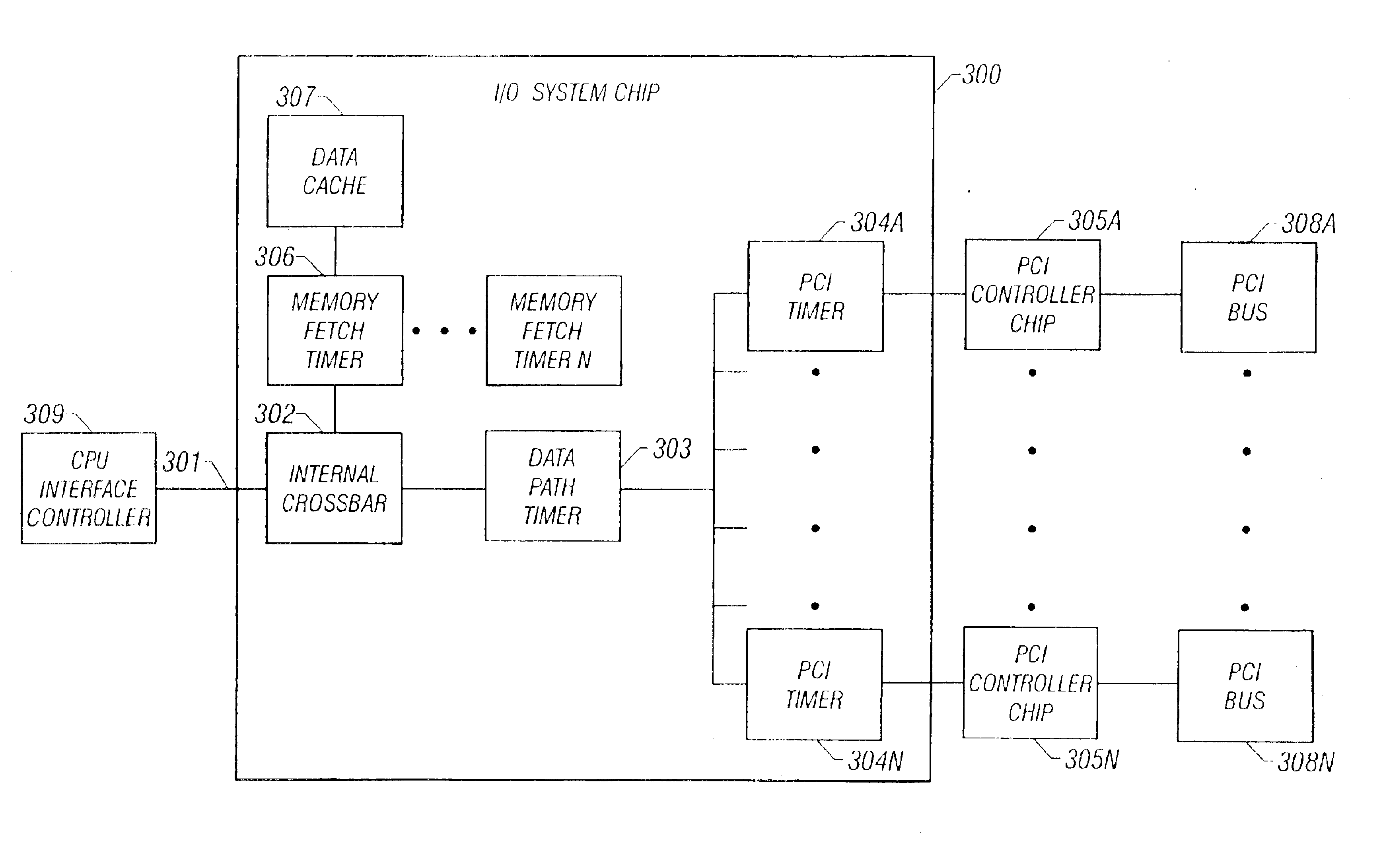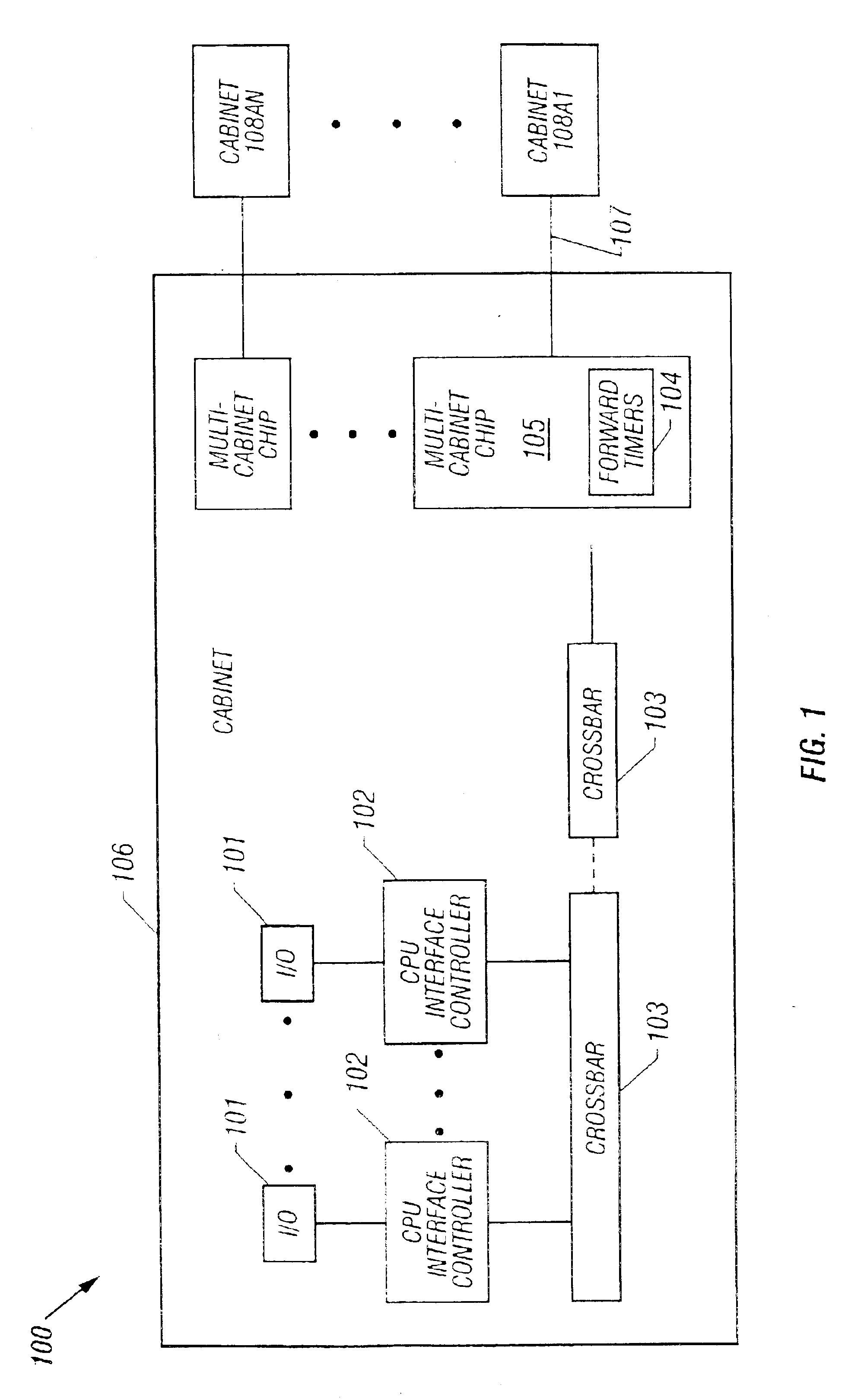Hierarchy of fault isolation timers
a timer and fault technology, applied in the field of computer servers, can solve problems such as system recovery, crash and loss, and irretrievably lost much valuable data, and achieve the effect of completing system recovery, and avoiding the loss of valuable data
- Summary
- Abstract
- Description
- Claims
- Application Information
AI Technical Summary
Benefits of technology
Problems solved by technology
Method used
Image
Examples
Embodiment Construction
FIG. 1 depicts an operational building block of a complex of computers according to a preferred embodiment of the present invention. The operational building block depicted in the particular embodiment of FIG. 1 is a cabinet 106. It will be appreciated that the timing and failure isolation mechanism of the present invention may be implemented employing a range of system configurations and is not limited to deployment according to FIG. 1.
In a preferred embodiment, cabinets such as cabinet 106 may be employed as modular building blocks of an overall complex of computers. Cabinet 106 preferably includes multi-cabinet chip 105 which provides for a robust communication interface capable of conducting bi-directional communication with other like cabinets, such as cabinets 108A1 through 108AN, over cables, such as cable 107, as much as thirty feet in length. Cabinet 106 may be connected to any number of other cabinets employing a multi-cabinet chip, such as multi-cabinet chip 105, for each...
PUM
 Login to View More
Login to View More Abstract
Description
Claims
Application Information
 Login to View More
Login to View More - R&D
- Intellectual Property
- Life Sciences
- Materials
- Tech Scout
- Unparalleled Data Quality
- Higher Quality Content
- 60% Fewer Hallucinations
Browse by: Latest US Patents, China's latest patents, Technical Efficacy Thesaurus, Application Domain, Technology Topic, Popular Technical Reports.
© 2025 PatSnap. All rights reserved.Legal|Privacy policy|Modern Slavery Act Transparency Statement|Sitemap|About US| Contact US: help@patsnap.com



